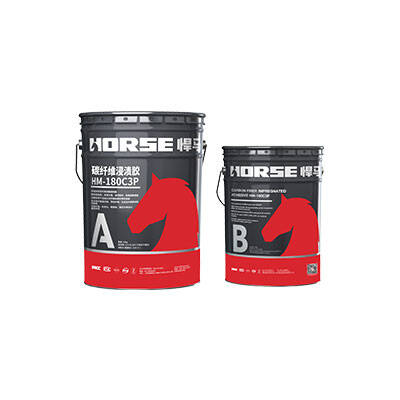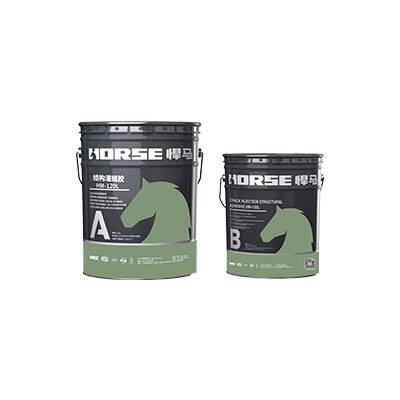De nombreuses recherches ont été menées sur la section normale, la capacité portante en section oblique, la capacité portante et la ductilité des éléments en flexion renforcés par des PRFC. Les méthodes de conception et de calcul sont peut-être plus abouties. Cependant, ces méthodes de calcul reposent sur l'hypothèse d'une adhérence solide entre le tissu PRFC et le béton, et la déformation du tissu PRFC atteint la déformation admissible avant rupture par pelage. Or, les expériences le montrent. L'effet du tissu PRFC sur le renforcement des structures en béton est étroitement lié à la performance d'adhérence entre le PRFC et le béton. La rupture par décapage du tissu PRFC est fréquente, brutale et fragile, et son utilisation est également peu satisfaisante.
1 mode de rupture par pelage des poutres en béton renforcé de fibres de carbone (PRFC)
1.1 classification selon la localisation de la destruction par pelage.
Selon l'emplacement de la défaillance du pelage, elle peut être divisée en défaillance du pelage final et défaillance du pelage intermédiaire.
1.1.1 Rupture par pelage d'extrémité
Ces dommages par pelage débutent aux extrémités et se développent en leur milieu. La rupture est causée par la concentration de contraintes à l'extrémité et est liée au mode de chargement, à la longueur de liaison de la plaque en fibre de carbone et à d'autres facteurs. Si deux points sont chargés centralement et que la portée de cisaillement est faible, des fissures de cisaillement apparaîtront facilement près de l'appui et une concentration de contraintes se formera près de l'interface entre le PRFC et le béton. De plus, lorsque la longueur de liaison du PRFC est faible et qu'il n'existe pas d'ancrage supplémentaire fiable, une rupture par pelage d'extrémité se produit généralement.
1.1.2 Rupture par pelage central
Cette destruction par pelage commence en son milieu et se poursuit jusqu'à l'extrémité. Ce type de rupture est causé par la concentration de contraintes au milieu de la portée. Par exemple, le moment de flexion et l'effort tranchant au milieu de la portée sont les plus importants, et les fissures apparaîtront d'abord vers le milieu de la portée. À ce stade, la concentration de contraintes se forme à l'interface entre le PRFC et le béton, près du milieu de la portée. Si l'extension de liaison effective est suffisamment longue, une défaillance du pelage intermédiaire se produira.
1.2 Classification selon le mécanisme de rupture par pelage
1.2.1 La couche de protection en béton est arrachée.
Cette destruction se produit généralement aux extrémités. Si la portée de cisaillement est faible, la résistance du béton est faible et la capacité de cisaillement insuffisante.
1.2.2 Écaillage du PRFC le long de la surface du béton à la base de la poutre
Si la portée du béton est légèrement supérieure, la résistance au cisaillement est plus élevée. Ce type de dommage se produit généralement. Les dommages commencent à l'extrémité et s'étendent jusqu'au milieu de la portée.
1.2.3 Provoque un écaillage longitudinal du PRFC le long des poutres en raison de fissures de cisaillement en flexion ou de fissures de flexion.
Si la portée de cisaillement de la poutre est importante et que l'allongement d'adhérence du PRFC est suffisant ou qu'il est possible de fixer un ancrage, la rupture par pelage commence généralement par la fissure de la portée de cisaillement. Et se poursuit jusqu'à la fin du développement ; ou si la poutre a une capacité de cisaillement suffisante, mais sa capacité de flexion est insuffisante. Lorsque la longueur d'allongement de liaison du PRF est suffisamment importante ou que l'ancrage supplémentaire est fiable, la rupture par pelage débute généralement par la fissure de flexion au milieu de la travée et s'étend jusqu'à l'extrémité d'un côté. Ce type de rupture se produit généralement lorsque la charge est concentrée au milieu de la travée.
3 facteurs affectant l'échec du pelage
La rupture par pelage entre une plaque de fibres et le béton est un phénomène de rupture incertain et influencé par de nombreux facteurs. Elle est principalement liée à la résistance du béton, à l'épaisseur de la couche de protection, au nombre de couches de liaison en PRFC, à la forme d'ancrage du PRFC, à la forme de charge de l'élément ajouté, à l'historique de charge, à la qualité de la construction, etc.
3.1 Résistance du béton
La résistance du béton est le facteur le plus important affectant l'adhérence entre la plaque de fibres et le béton. Les résultats des essais montrent que la résistance de l'adhérence entre le béton et les matériaux composites augmente avec la résistance du béton, dans une certaine plage de résistance. Plus la résistance du béton est faible, plus il est facile de l'arracher. Même si la résistance du béton est élevée, cela peut être dû au fait que l'effet de coffrage du béton superficiel n'atteint pas la valeur de résistance d'essai ; ou, pour les éléments en béton existants, à cause du vieillissement, de la corrosion de l'acier ou d'autres facteurs, à la présence de microfissures longitudinales et transversales à la surface de la partie superficielle du béton, entraînant une faible résistance et un arrachement.
3.2 Longueur d'ancrage : identique à celle de l'ancrage.
La longueur et le mode d'ancrage sont également des facteurs importants affectant l'adhérence interfaciale entre la plaque de fibres et le béton. Plus la longueur d'ancrage est courte, plus la contrainte d'adhérence locale est importante, plus la concentration de contrainte aux extrémités est importante et plus le risque de rupture par arrachement est élevé. Au-delà d'une certaine longueur, la contrainte d'adhérence n'augmente pratiquement pas. Le risque de rupture par pelage d'extrémité est considérablement réduit. Une rupture par pelage central a été observée à mi-chemin. De plus, l'essai montre qu'un ancrage supplémentaire a une influence significative sur la résistance au pelage de la poutre. Par exemple, un ancrage supplémentaire à l'extrémité peut réduire le risque de pelage. En règle générale, l'auto-ancrage des éléments d'armature ne peut être obtenu par extension de la longueur d'assemblage du PRFC, ce qui nécessite diverses mesures d'ancrage supplémentaires sur le périmètre. L'effet de l'ancrage avec un cerceau en U (cerceau en tissu de fibre de carbone, cerceau en U en tôle d'acier) pour prévenir le pelage longitudinal du tissu de fibre de carbone est évident.
3.3 Matériau et quantité d'armatures
Pour les poutres en béton armé renforcées par des plaques de fibres, l'augmentation de la capacité portante ultime dépend principalement du transfert des contraintes d'assemblage par la couche de liaison, et la rigidité de la résine est élevée. Une bonne flexibilité de la plaque de fibres peut réduire efficacement les contraintes d'assemblage, réduisant ainsi le risque de rupture par pelage ; plus la quantité d'armatures est importante, plus l'épaisseur et la rigidité de la plaque de fibres de carbone sont importantes, tout comme sa quantité.
3.4 Qualité de construction
L'adhérence des plaques de PRFC est lisse et de bonne qualité, ce qui assure une force uniforme dans le sens transversal et réduit les dommages par pelage causés par une séparation locale. La résine adhésive entre les plaques de PRFC et le béton et entre les plaques de PRFC est complète et uniforme, ce qui contribue à prévenir l'apparition et le développement de dommages par pelage.
3.5 Historique de charge
Les résultats expérimentaux montrent que le risque de rupture par pelage est similaire à celui d'un renforcement sans contrainte unique, mais qu'avec l'apparition de fissures, le risque de rupture par pelage est similaire. Le risque de pelage et de rupture augmente si l'armature n'est pas utilisée lorsque cela est nécessaire.
3.6 Forme de charge
La rupture par décoffrage de la section en flexion-cisaillement près de la fissure inclinée du point de charge se produit souvent sous charge concentrée, et s'accompagne d'une rupture par décoffrage de la section en flexion pure à mi-portée.


































